Rose
Rose (golap) any of the wild or cultivated, usually prickly-stemmed showy flowered shrubs of genus Rosa belonging to the family Rosaceae. The total number of species in the genus exceeds 150. In Bangladesh one native species (Rosa involucrata or Rosa clinophylla) is found to grow in the marshland of Mymensingh, Sylhet and Chittagong districts. The spiny bushes are not so impressive. The species that have played an important ancestral role in the production of modern cultivated varieties are Rosa rugosa, R. mundi, R. centifolia, R. canina, R. damascena, R. gallica etc.
| Rose varieties | ||
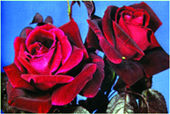 |
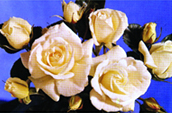 |
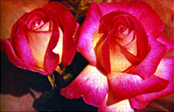 |
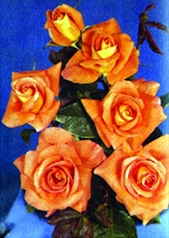 |
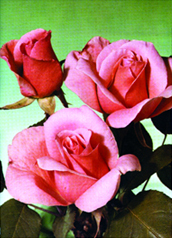 |
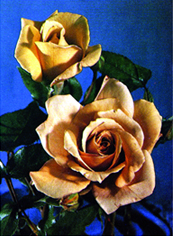 |
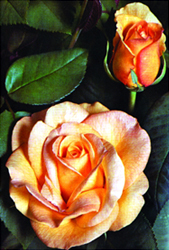 |
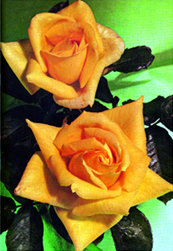 |
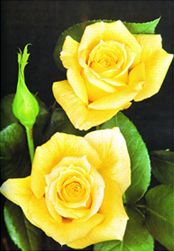 |
Many myths and legends show the extent to which the rose had captured the imagination of the ancients. In Greek mythology, rose appeared from the drops of blood of Venus- goddess of Love and Beauty. In Arabian legends it is said that a nightingale adored a white rose, and when it kissed the rose it became wounded by the thorn, and the blood turned the rose - a red rose. According to Hindu Legend, when Brahma claimed lotus to be the most beautiful flower on earth, Vishnu invited him to his paradise, and pointed to a pale, perfumed rose. There are endless myths relating to rose.
Fossil remains of the rose have been found to be 26 million to 38 million years old. No exact information has yet been obtained about the first cultivation of rose. It seems that Greece, Rome, Middle East, and China have been cultivating rose from the ancient time. Rose spread from Northern to Southern hemisphere; western plants were characteristically light coloured and flowered only once a year for a very short period, while flowers of the far east were bright, colourful with continuous flowering habit. Crossing among different species and varieties brought about the revolution in the history of roses. Now it offers an endless variety of shapes, sizes and colours.
Rose is a complete flower bearing all four whorls - calyx, corolla, androecium and gynoecium. Stamens and carpels are usually numerous. All roses can be said to be more or less shrubby although some species can have the climbing habit. Climbers use their thorn as they creep over the supports. Some species are almost thornless, while others have numerous thorns. As a result of breeding work for several centuries, the rose has attained a wealth of form, with a spectrum of colours in which only true blue and true black are missing.
Mughal Emperor Babar introduced a rose in this subcontinent named Bashra, a highly scented, light pink coloured variety having weak stem, long branches, and flowers in clusters at the top. Many of old gardens still have this variety.
In Bangladesh some local varieties have been raised, such as 'Fatema Sattar', 'Shibly', 'Rahela Hamid', 'Piyaree', 'Bhasani', Sher-e-Bangla', '1952', and 'Jayanti. In the absence of suitable gardens, it is uncertain whether these varieties can be maintained for long. Roses are naturally cross-pollinated by insects like ants, bees or butterflies, and seeds from naturally formed rose fruits may give a variable progeny possessing a complex pedigree.
Roses can be propagated by seeds, cuttings, and layering, and by budding, or other forms of grafting. Some types can be readily multiplied by means of cutting such as 'Tajmahal' and 'Papa Meilland'.
For the commercial production, budding is by far the most suitable of all forms of grafting for roses. In this technique, the desirable variety is budded on to the stem of the stock which provides the root system. In this way, some of the world-renowned roses like Papa Meilland, Double Delight, Dutch Gold, Queen Elizabeth, and Montezuma are being raised in Bangladesh. Rose plants can also be produced through tissue culture or micropropagation technique but it is not yet commercially viable.
Rose has been used for many purposes from the ancient time. Not surprisingly, it has been figured in the poetry and music, in rituals, in jewellery, in pottery, and in embroidery. Rose water has been valued in Islamic Culture and is used in Milad-Mehfils as a symbol of purity. The credits for the discovery of Otto of roses (rose-oil) are given to Nur Jahan who noticed the oily drops of roses and named Attar-e-Jahangir. This perfume is also used in making incense sticks. Rose petals are also used in making some sweets including jellies. It has some herbal value. The fruit- 'rose hip' is very rich in vitamin C. Petals is often used in 'Pot-Pourri'.
Many countries of the world earn foreign currency by exporting quality roses produced in green houses under controlled conditions. In Bangladesh also the production and marketing of roses have increased recently. The whole subject of rose including its cultivation, pests and diseases, hybridization, mutation, commercial production, marketing, exhibition, and micropropagation is being recognised as specialized branch of arboriculture. [Mahbubar Rahman Khan and Tabassum Mumtaz]
